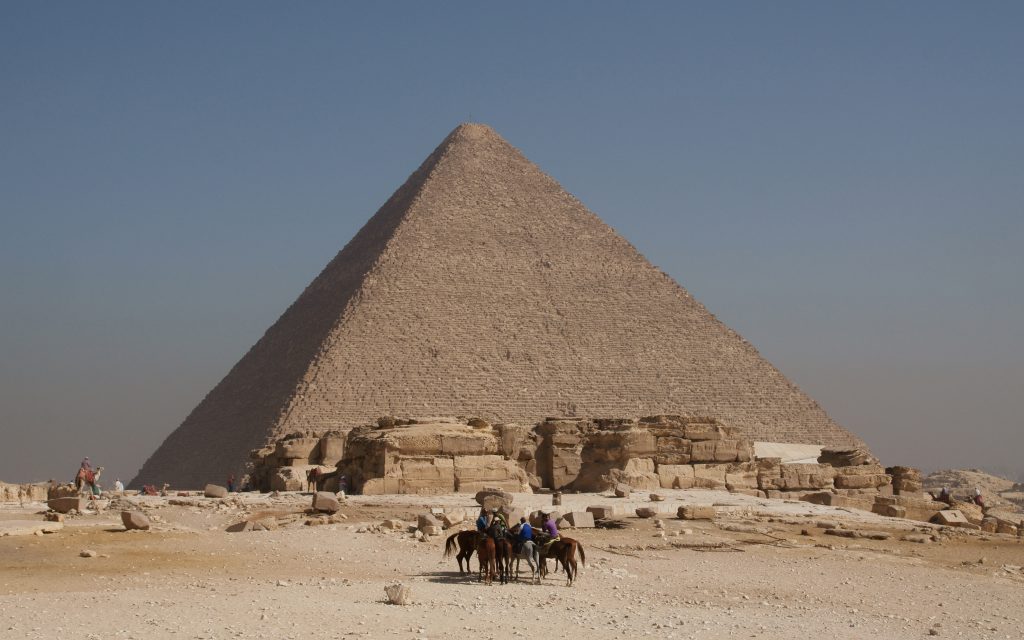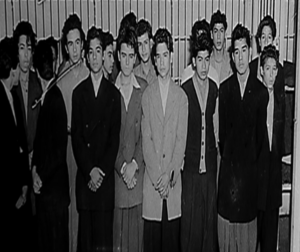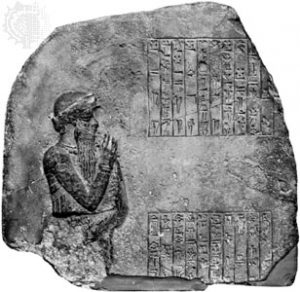I think that it is a given that humans have a bit of a fascination with death and everything that comes after, that is, if one even believes that there is anything that comes after death. In fact, one can find that this fascination can even be seen in ancient human societies, and of all of them there is none that shows more fascination with the dead than the great society of ancient Egypt, which built great monuments and sculptures to the dead, wrote guides for the dead to use on their journey through the afterlife, and mummified bodies so that the “Ka,” which was their concept of the soul, could travel and exist in the afterlife.

One of the most well known things about the ancient Egyptians are their mummies; but what exactly are mummies? They are not the man killing monsters that Hollywood films have come to portray them as, but are rather simply the preserved and mummified remains of a person. This leads us to the next question: why mummify the dead? The reason the dead where mummified is simple: without the body, the Ka cannot exist and the Ka is what allows one to travel and live in the afterlife.
The Ka itself is very much like the Christian concept of the soul, which is believed to go either to heaven or hell after death.1 According to Egyptian culture and religion, the Ka is the spirit-body. However, in order for it to exist, it must also have a physical body. So to insure that the dead would be able to go to the afterlife, the body was mummified so that it might stay behind as the Ka moved on to the afterlife.
While the Egyptians mummified the bodies to be sure that the Ka had a physical form in which it could reside, there was still an issue: tomb raiders. Tomb raiders plundered tombs and took the bodies of the dead, or defiled them, causing the Ka to become separated from its physical form. It is important to keep in mind that this was not really an issue for the poor members of society, but for the elite and pharaohs of ancient Egypt this was quite important.2
It is for this reason that the high elite of Egyptian society—mostly the pharaohs—had statues made and sculpted in their image. They believed that, if their tomb was raided and something happened to their body, the Ka simply moved from the body to the statue, which became the new physical form in which the Ka resided.3
Egyptian funerary texts are another aspect of the Egyptian culture that exhibits a fascination for the dead in ancient Egyptian culture. The funerary texts, called “Per en Bru” by the Egyptians, roughly translates to the Coming of Days. The texts themselves were very unique, each created with the intent of helping the deceased travel through the afterlife.4 In a sense, funerary texts were a kind of general guide or handbook, which consisted of a multitude of spells and information on the afterlife that was believed to help the Ka on its way to the new life.

Another thing that shows how fascinated the Egyptians were with the dead can be found in urns and canopic jars. It was not until the first explorations of the Egyptian tombs that archaeologist came to find the canopic jars, and it was not until they were opened that archaeologists learned that within these jars were the preserved organs of the dead.5 It was only due to the discovery of the funerary texts that archaeologists learned the reason for this. What was learned was that the organs were placed into the jars so that the Ka would be able to take them to the afterlife. However, not all organs were preserved in these jars, and not all of the ones that were preserved served a practical use. One example of this is the heart. In fact, the funerary texts detail how the Ka would carry the heart to Anubis, who would then place it on a scale to be weighed against a feather of Ra. Once place on the scale, the trial of judgement would begin; now there are some important things to know about this trial; first, the feather of Ra symbolizes purity and perfection; second, the heart represents the soul or Ka, so when the heart was placed on the scale, if it weighed more than the feather, that meant that the Ka was not pure, and Anubis would have his beast devour the heart, thus erasing the Ka. However, if the heart weighed less than the feather, that meant that the Ka was pure and could move on to its new live in the afterlife.
- Erik Hornung, The Ancient Egyptian Books of the Afterlife, David Lorton, translator (Cornell University Press, 1999), 154. ↵
- Jan Assmann, Death and Salvation in Ancient Egypt (Cornell University Press, 2005), 105. ↵
- Henri Frankfort, Ancient Egyptian Religion: An Interpretation (Courier Corporation, 2012), 96. ↵
- John H. Taylor, Death and the Afterlife in Ancient Egypt (University of Chicago Press, 2001), 196. ↵
- Ann Rosalie David, Handbook to Life in Ancient Egypt (London: Oxford University Press, 1999), 152. ↵



87 comments
Octaviano Huron
Great article. I found it interesting that the representation of “Ka” in Egyptian culture was very similar to the “soul” depicted in Christianity. I also found the judgment Osiris places on those trying to enter the afterlife to be very fascinating, as the heart was the core of man in physical form to the ancient Egyptians. Overall, this article was very well done in offering the varying reasons for mummification.
Hali Garcia
I remember being interested in mummies when I was a kid, and again when I was in high school and we had to do a project on how different cultures treated the dead and what their beliefs were. It is interesting how they thought the soul, or “Ka”, had to leave behind a body to move on to the afterlife. I did not know the reason they took out the organs was so that the Ka could take them with it to the afterlife. This is a very neat article.
Joshua Garza
You can see some similarities between the ancient Egyptian concept of death and modern religions today about the concept of the soul, afterlife, and where you go when you die. It seems that way with almost every ancient religion where you can find ties to how their belief system was somewhat close to ours and makes you think if modern religions were shadowed of of these religions.
Kathyleen Lauriano
Its interesting to read about ancient Egyptians and what they used to do. I find it nice how they would pay tribute to their dead by trying to preserve both their organs and bodies. I like how they included the fact that after they die their hearts are weighed on whether they are pure or not. This article was well written and gave amazing detail. Good job!
Yadira Chavez
Although the way that Egyptians have historically paid tribute to their dead is different, we still see patterns that have been in various religious societies since the first written documents of organized thought. Many religions talk about the difference between our mortal bodies and our immortal souls that will eventually be judged. Super neat article!
Stephanie Silvola
i have always liked that the dead in Egypt were preserved in some type of way for the afterlife. Of course not all of them, but still the way death was practiced was beautiful. The “Ka” of the body that going to where Anubis is and getting judged is an interesting fact to me. The person is already dead, but is still being judged shows that it is a little bit like how Christianity views heaven and hell. I love that this article touched on a topic that I am familiar with and describes that mummies aren’t just dead bodies, but souls that are forwarding their “lives”.
Mariah Cavanaugh
It is fascinating to me that so many societies believed and continue to believe in some type of soul. As you explained, for Egyptians the “Ka” was the soul and they built a series of beliefs about how best to position people for the afterlife around this concept. We are not so different today. As you mentioned our modern societies and religious traditions believe in the soul, and we have several customs built around the afterlife for our version as well. Though the Egyptians may have gone about it somewhat differently, it seems many of these practices have transcended time.
Annissa Noblejas
Ancient Egyptian couture definitely held high importance of an afterlife. It was an interesting comparison of the similar themes between Egyptian Ka and the Christian soul. All the emphasis on preparing a body to continue into the afterlife, seems somewhat presumptuous if a heart must first pass Anubis’ test against the feather of Ra. If that first test if failed, there is no afterlife for that person. I wonder, what preparations were taken during life to ensure one passed?
Marlene Lozano
I find it fascinating how the Egyptians started to mummify the pharaohs and the elite. The way movies portray mummies is really different from the actual meaning behind them. I was surprised to find out about the Ka and how they used the heart to figure out whether or not they will be able to go into the afterlife. Overall this is a great article!
Samuel Stallcup
When I first learned about mummification in high school, I was amazed this was achieved such a long time ago. It’s also interesting that the motive, most of the time, was religiously based, and I think that it’s remarkable that a society is able to be on the same page with religion and ginormous projects, such as the Pyramids. Nice article.